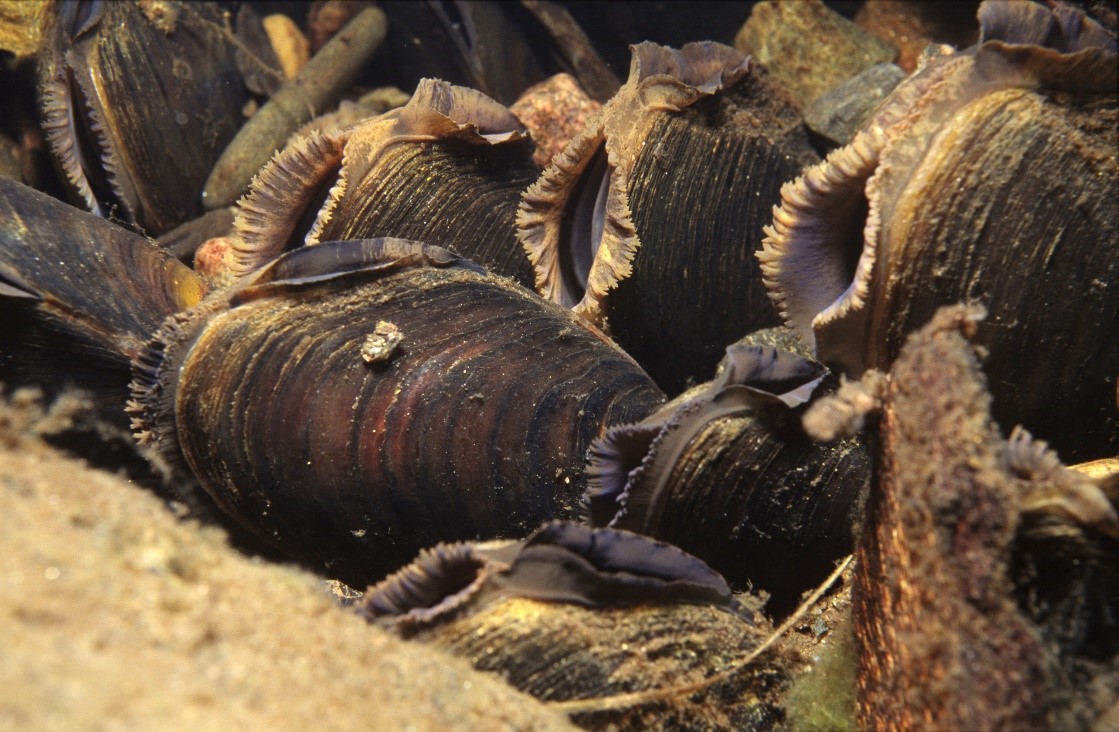Esk and Coastal Streams Catchment Partnership
- Catchment HostNorth York Moors National Park Trust
- River Basin DistrictHumber
- Management CatchmentEsk and Coast
- Management Catchment ID3037
Catchment partnership vision
Our vision is to create a healthy, resilient and wildlife rich environment within the Esk and Coastal Streams Catchment, that will bring both social and economic benefits to all. Our aims and objectives are to:
- improve water quality and the environment; working with land managers, organisations and interested bodies to improve the aquatic habitat of the of the catchment, and the rare and threatened species that the river and wider landscape supports
- manage water levels; harnessing natural flood processes to create a more naturally functioning river, reducing flood risk and preserving water resources
- reconnect people to their local river; improve understanding of the river landscape by telling the story of its evolution, encouraging people to protect their heritage, whilst promoting volunteering opportunities
- ensure effective partnership collaboration and governance, and develop a robust evidence base to deliver our objectives.

Related websites
Find out more about the activities and ambitions of this catchment partnership and how you can get involved to help improve the water environment in the catchment.
Catchment challenges
Current challenges identified by partnership

Pollution from agriculture and rural areas
Majority of surrounding land use is agricultural, which directly or indirectly inputs into the Esk

Physical modifications
Fish passage of native fish severely restricted through many obstacles such as weirs, fords and culverts

Invasive Non-native Species
Signal Crayfish entering the catchment is a significant risk, their presence would be catastrophic for the Esk and the freshwater pearl mussel
Wider water environment challenges identified by partnership
Improved shellfish waters
Catchment is home to the last surviving population of endangered freshwater pearl mussel in Yorkshire
Nature Recovery, protect and enhance rare habitats including chalk streams
Catchment includes designated habitat including upland moorland, Sites of Special Scientific Interest and marine conservation zones
Reduce storm overflows and drainage system incidents
Combined sewer overflows discharge into the Esk, impacting water quality and recreational use including fishing and bathing
Protect and restore healthy soils and nutrient balance
Significant agricultural activity across catchment; restoring soil health through sustainable land management and regenerative farming are a priority
Improved bathing waters (including inland)
The Esk catchment includes coastal designated bathing waters
Build environmental resilience and adaptation to climate change
Our moorland is a climate vulnerable habitat but can also be used to sequester carbon and mitigate climate change
Future challenges predicted by partnership

Invasive Non-native Species
Invasive species, plant and animal, threaten water quality and our existing habitats, ecosystems and species

Pollution from agriculture and rural areas
Agriculture is a key practice within the catchment, diffuse pollution from this source threatens water quality, ecosystems and species

Pollution from waste water
Waste water overflows negatively impact water quality in the catchment and threaten ecosystems and species pressure will increase with climate change and increased storms
Future challenges predicted by Environment Agency
Future challenges in 2050
- Invasive Non-native Species
- Changes to the Natural Flow and Water Levels
- Physical Modifications
Emerging challenges
- Changes to the Natural Flow and Water Levels
- Physical Modifications
- Invasive Non-native Species
Partnership success highlights 2016 to 2021
Established in 2014 and refreshed in 2020, the Esk and Coastal Streams Catchment Partnership has developed into an active partnership of 12 organisations focused on completing a range of projects across the catchment. Our collaborative partnership identifies issues and solutions, funding opportunities and helps ensure successful outcomes. Member organisations, stakeholder and volunteers have helped deliver incredible projects across the catchment; since 2016, the partnership has:
- treated and removed 18 km of invasive non-native species, particularly focusing on giant hogweed and Japanese knotweed control - the program has been very successful reporting a 50% reduction in Japanese knotweed since 2010
- established a ‘freshwater pearl mussel steering group’ and completed several projects to improve water quality, habitat and host species populations for this endangered species - an active captive breeding programme is ongoing and work continues for their reintroduction, including the creation of a long-term strategy
- collaborated with over 107 farmers and landowners, providing grants and advice for implementation of sediment reduction and natural flood management measures
- attracted funding from 10 grants to deliver projects such as the ‘Blue Corridors’ and natural flood management measures on over 21 small holdings
- worked creatively with resources to get the best for the catchment, engaging with volunteers to harness 4,260 hours of environmental monitoring and restoration work within the catchment since 2011.

Partnership development plans
The Esk and Coastal Streams Partnership aims to be extremely ambitious with its projects. This means we will be taking an integrated, whole catchment scale approach in resolving the Esk catchments environmental issues, in particular agricultural diffuse pollution, sedimentation and barriers to migratory fish. We are working with our diverse group of partners to achieve landscape projects, whilst also including projects and achieving outcomes on the smaller local scale.
Partnership priority actions and measures for 2022 to 2027
Confident
Blue corridors project - creating passage for the Esk's migratory fish
- Reason for measure
- Mitigate the impacts on ecology from physical modifications in modified waters
- Delivery mechanism
- EU funding
- Location
- Esk
Confident
Esk restoration project - tackling agricultural diffuse pollution and sedimentation, through natural capital works
- Reason for measure
- Control or manage rural diffuse pollution
- Delivery mechanism
- Water Environment Grant (WEG)
- Location
- Esk
Confident
Invasive non-native species control program focusing on Himalayan Balsam and Japanese Knotweed
- Reason for measure
- Control or manage invasive non-native species
- Delivery mechanism
- EU funding
- Location
- Esk
Confident
Catchment monitoring - Invertebrate and e-fishing, citizen science annual program
- Reason for measure
- Manage modified habitats
- Delivery mechanism
- EU funding
- Location
- Robin Hoods Bay Esk Esk TraC Sandsend and Staithes
Confident
Esk Coastal Streams Restoration Project
- Reason for measure
- Control or manage rural diffuse pollution
- Delivery mechanism
- WEIF Water Environment Improvement Fund
- Location
- Sandsend and Staithes
Less certain
Freshwater pearl mussel - 4 phased reintroduction - assessing water quality and habitat suitability
- Reason for measure
- Control or manage rural diffuse pollution
- Delivery mechanism
- Potential future water industry programme
- Barriers to delivery
- Funding to be obtained
- Location
- Esk
Less certain
Signal crayfish - Establishment of control measures to prevent invasion
- Reason for measure
- Control or manage invasive non-native species
- Delivery mechanism
- Other local funding
- Barriers to delivery
- Interventions yet to be scoped by working group
- Location
- Esk
Less certain
Combined sewer overflow Greenflow - Investigation into impact of storm overflows
- Reason for measure
- Control or manage point source discharges
- Delivery mechanism
- Potential future water industry programme
- Barriers to delivery
- Full project development and scoping, funding to be obtained, delivery partners to be agreed
- Location
- Esk
Less certain
INNS Control Program
- Reason for measure
- Control or manage invasive non-native species
- Delivery mechanism
- Potential future water industry programme
- Barriers to delivery
- Funding opportunities to continue program past 2023 to be identified
- Location
- Esk
Less certain
Septic tank project - initial education program encouraging best use of septic tanks, distribution of leaflets
- Reason for measure
- Control or manage point source discharges
- Delivery mechanism
- None identified
- Barriers to delivery
- Very much a pipeline project
- Location
- Robin Hoods Bay Esk Esk TraC Sandsend and Staithes
Less certain
Obstacle Esk - In-stream obstacle assessment program, feasibility study to recommend fish passage on non 'Blue Corridor' obstacles
- Reason for measure
- Mitigate the impacts on ecology from physical modifications in modified waters
- Delivery mechanism
- None identified
- Barriers to delivery
- Funding to deliver both phases of project to be acquired
- Location
- Robin Hoods Bay Esk Esk TraC Sandsend and Staithes
Wider water environment
Esk Freshwater Pearl Mussel Project
- Reason for measure
- Improved shellfish waters
- Delivery mechanism
- Potential future water industry programme
- Location
- Esk
Wider water environment
Moorland Restoration - Working with projects such as the Moor to Restore and Great North Bog projects to improve peat moorland across the catchment
- Reason for measure
- Nature Recovery, designated areas for nature and biodiversity
- Delivery mechanism
- Landscape Recovery (ELMS)
- Location
- Esk and Coast
Wider water environment
Greenflow Project - Investigating and mitigating impact of combined sewer overflows, storm overflows and other domestic waste water sources
- Reason for measure
- Reduce storm overflows and drainage system incidents
- Delivery mechanism
- Potential future water industry programme
- Location
- Robin Hoods Bay Esk Esk TraC Sandsend and Staithes
Catchment Partnership contributors
Partners involved in the creation of this page and the actions of the partnership: